Spring tour of the groundwater monitoring wells in the Columbia Basin
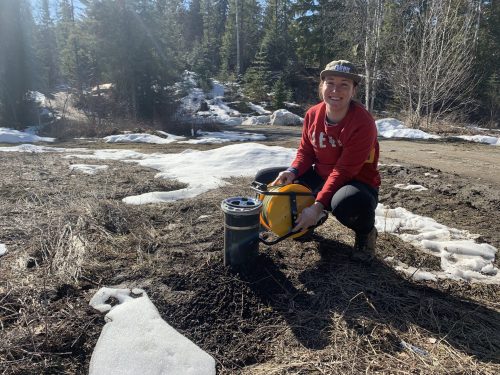
Kayla Harris, Living Lakes Canada’s Columbia Basin Groundwater Monitoring Program Coordinator, taking a manual water level reference measurement at a Columbia Basin Volunteer Observation Well.
It was a busy spring for Living Lakes Canada’s Groundwater Monitoring Program. Through March and April, Program Manager Carol Luttmer, Program Coordinator Kayla Harris, and the program’s regional technicians made their rounds to all of the program’s different Volunteer Observation Wells (VOWs) within the Columbia Basin.
Additionally, in response to requests for groundwater data in different regions, groundwater level monitoring equipment was installed in six new VOWs: three in the Creston area and one in the Nelway, Slocan Park, and Nakusp areas respectively. This brings the total number of VOWs in the program to 28.
Living Lakes Canada typically visits the wells three times per year — in the spring before the spring runoff (freshet), mid-summer during potential drought conditions, and in the fall prior to winter. During these visits, the team conducts routine maintenance, adjusting the loggers and ensuring they are working properly, downloads the data, and checks in with well owners. The data collected during these periods show how water levels change seasonally and from year to year.
A key component of the program is sharing the data. According to Paul Williamson, a hydrogeologist with Western Water Associates Ltd, a Vernon-based consulting firm that works throughout British Columbia, the Groundwater Monitoring Program has proven to be a beneficial resource.
“As hydrogeologists, we are constantly looking for sources of reliable groundwater data that are relevant to the watersheds in which we are working,” said Paul. “The Living Lakes data is easily accessible and provides valuable insight into the seasonal and long term trends of groundwater within specific regions. This data can play a significant role in making informed decisions regarding the sustainable management of water resources in BC. It is our sincere hope that the program continues to expand into the future.”
This spring, the program worked with numerous partners on well maintenance and upgrades, ongoing monitoring, and site selection for the new Volunteer Observation Wells: Martech Electrical, Associated Engineering, Richard Johnson (a professional engineer working with the Arrrow Lakes Environment Stewardship Society), and community members around Creston, Nelway, Slocan Park and Nakusp. We are very grateful for these collaborations.
Also this spring, Living Lakes Canada shared information about the groundwater monitoring program at the BC Groundwater Association’s Annual Convention and the Canadian Water Resources Association National Conference. At these conferences, we met with industry, government, and First Nations representatives, researchers, and consultants who can use the data to inform our understanding of groundwater systems and work towards the protection and management of this valuable resource.
In the Columbia Basin approximately 60% of drinking water supply systems rely solely on groundwater and many rural residents rely on private wells for their homes and gardens. Groundwater is also vital for maintaining healthy ecosystems by providing flow to streams, rivers, and lakes, keeping streams and rivers cool, and providing nutrients that support aquatic and terrestrial habitats. It is extremely important to continue to work to gain an understanding of the condition of groundwater and supplying aquifers. The groundwater monitoring program partners with well owners, including private landowners, municipalities, First Nations, and others such as Selkirk College and the Nature Trust of BC, who generously volunteer their wells for long-term groundwater level data collection. Groundwater levels are gathered hourly via bluetooth-equipped monitoring devices called loggers. Real-time data can be accessed by the well owners via an app on their phones. After the data are reviewed the data are available publicly on the Columbia Basin Water Hub and B.C.’s Real-time Water Data Tool. For more information about the program, visit the program’s webpage.
For more information about the Columbia Basin Groundwater Monitoring Program contact us at groundwater@livinglakescanada.ca.
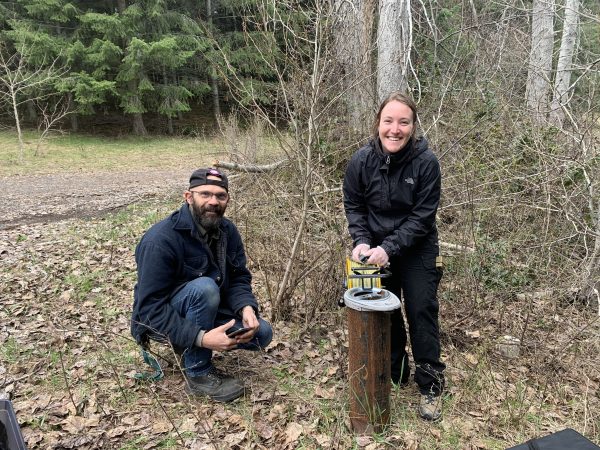
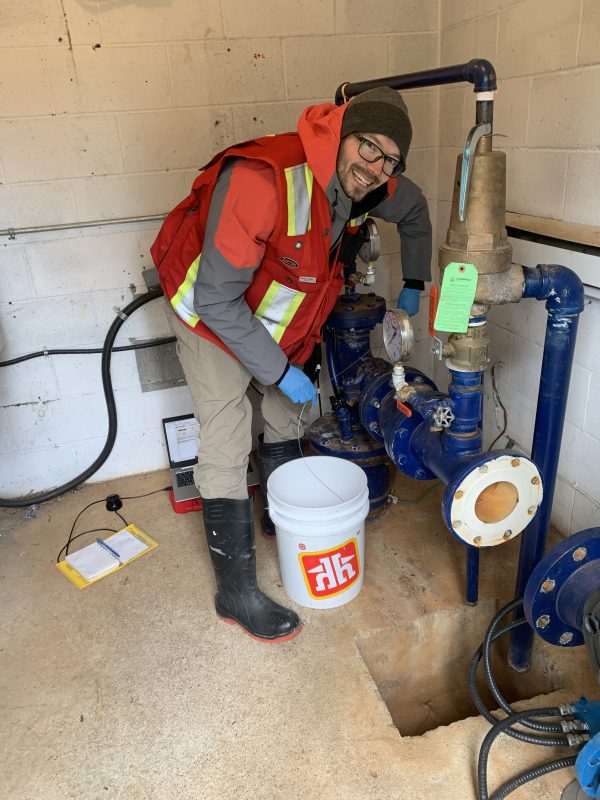
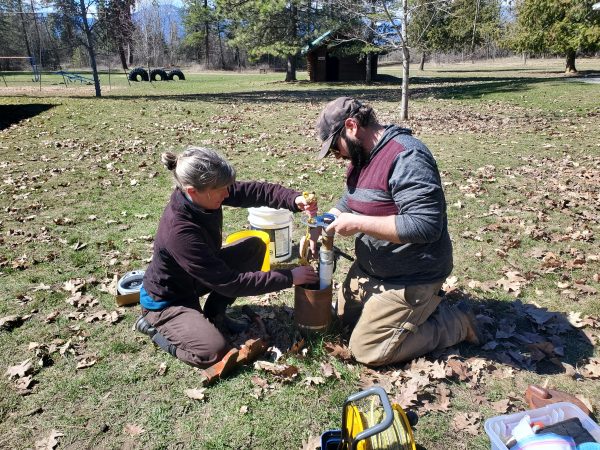
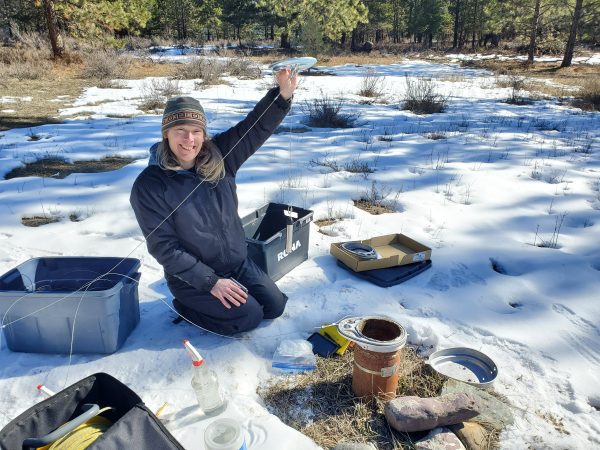
Leave a Comment
You must be logged in to post a comment.




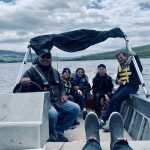
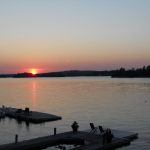
This is wonderfully interesting. I’m so glad there is somebody doing this. I’m new to the Nelson Kootenay Lake area. Our property has a groundwater well. A lot of water flows from the mountain on the North shore year round. Apparently a lot of the North shore is on boil water advisory much of the year. I’m interested to learn more.
We live on the Rosebud Lake Road near Nelway BC. We are currently studying our Watershed. We would like to talk to someone about monitoring our aquifer as we have several wells that would be considered non-consumptive. Who is the Contact at living Lakes Canada we should contact. Thanks.
Dave Lang
250-357-2129
box 447
Salmo, BC V0G 1Z0